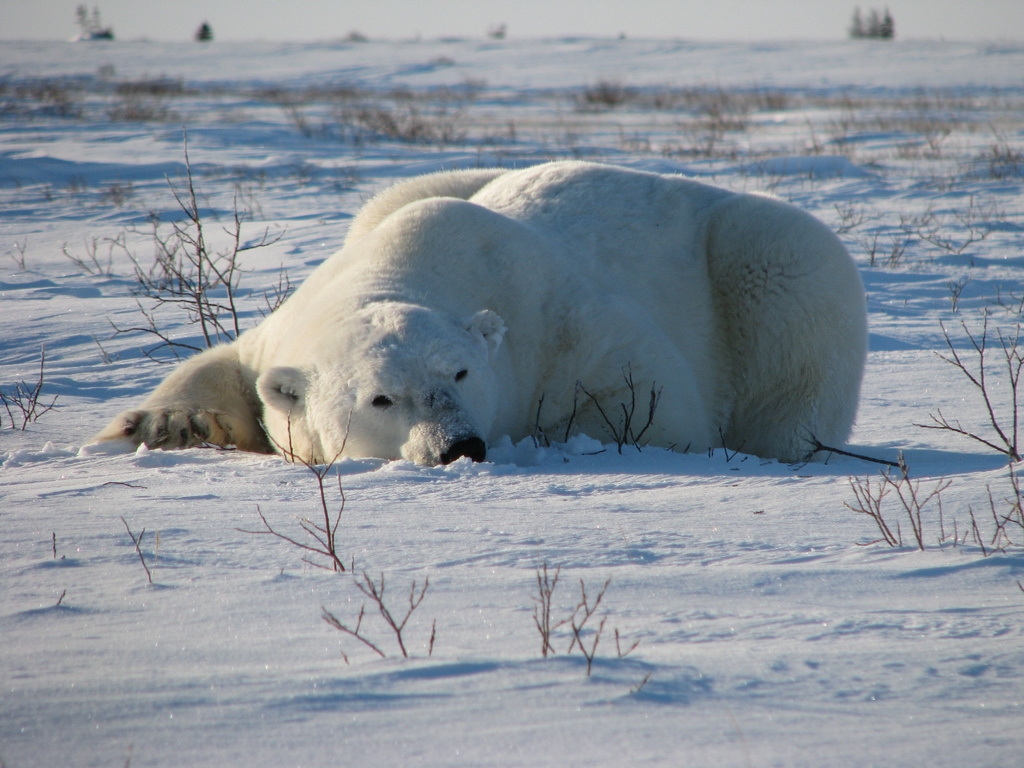Fort Severn is concerned about Ministry of Natural Resources plans to establish buffer zones around polar bear dens.
“We understand there will be a certain buffer zone for where the denning areas are,” said Fort Severn Chief Matthew Kakekaspan. “For example, if there are 50 dens, that’s 50 areas that are going to be covered within our area.”
Kakekaspan said his community is not sure how large the buffer zones will be but polar bears have not been known to go very far inland up to now and they always go back to where they have denned before.
“What we’re concerned about is the MNR is creating little parks in our area,” Kakekaspan said. “They already have a big park which they created way back and we’re really concerned this will affect our way of life, our hunting and our trapping and our fishing if the protected areas are in place.”
Kakekaspan said polar bears also hang around certain areas along the coast from August to November before they go out onto newly formed ice.
“We’re concerned about that as well,” Kakekaspan said. “Will we be able to go into these areas?”
Kakekaspan recently attended an MNR-Nature Conservancy of Canada workshop Oct. 28-29 in Timmins proposing the development of a polar bear recovery strategy for the province. He has asked for the next meeting to be held in Fort Severn.
“We wanted it in our community so the recovery committee can hear some of the stories from our Elders, to hear their opinions,” Kakekaspan said. “What they’re saying is they have always lived with the polar bear and they don’t feel they are threatened. The Elders are saying there’s a lot more bears, they don’t see a decline.”
Kakekaspan said the MNR put the polar bears on the list because their body fat levels are lower than in the past.
“They’re losing body fat,” Kakekaspan said. “Their body fat is not what it used to be.”
Lakehead University Centre for Northern Studies researcher Martha Dowsley attended the workshop to showcase a two-year Social Sciences and Humanities Research Council-funded research project she is working on as principal investigator along with fellow LU Centre for Northern Studies researcher Harvey Lemelin. The research documents Swampy Cree interactions with polar bears.
‘Share knowledge’: MNR
The research also documents historic interactions between the Cree and the Ontario government regarding the species.
“Polar bears are one of several species with very high subsistence and cultural value to the people of Fort Severn and Weenusk,” Dowsley said. “The goal of our project is to build capacity in the communities to manage these resources.”
An MNR spokeswoman said the Committee on the Status of Species at Risk in Ontario assessed polar bears as a threatened species due to observed declines in the bears’ health, coupled with predicted future decreases in sea ice due to climate change.
To comply with the Endangered Species Act, 2007, the MNR amended the Species at Risk in Ontario List in September 2009 to reflect the assessment.
“As a threatened species, the ESA requires us to prepare a recovery strategy within two years for polar bear (due next September) that will provide advice on how to protect and recover this iconic species,” said Emily Kirk, an MNR spokeswoman, in an e-mail message. “We encourage Aboriginal communities to share their traditional knowledge and advice with us as we develop the recovery strategy. We understand that protection and recovery of polar bear is very important to these communities and we are seeking their participation to ensure that polar bear remain part of Ontario’s biodiversity for generations to come.”
Gold has arrived.










Gold has arrived. Here in the north of Ontario we see vast streams of gold shimmering across the landscape as autumn is here and the the leaves are turning...
I am the product, evolution of many thousands of years as are you. I grew up on the land in the remote far north of Ontario following in the footsteps of my...